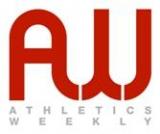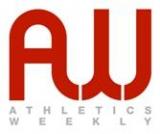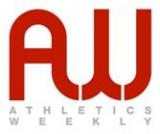Folders |
Female running injuriesPublished by
Five of the more common women-specific running injuries are highlighted and discussed by Jason KarpYour performance as a runner is dependent on a delicate balance between periods of intensive training and periods of recovery and it is this balance which allows for optimal musculoskeletal adaptations. Failure to allow for adequate recovery between training sessions can lead to a breakdown of the body s ability to repair itself and eventually to an overuse injury. Injuries result from repeatedly applying a stress to a particular body part over a period of time. Unlike their male counterparts, women are further predisposed to injury due to the unique relationship between mechanical, hormonal, and nutritional factors. Below are listed the most common women-specific running injuries, with details on their causes, symptoms and treatments. Stress fracturesThese occur when more stress is applied to a bone than what the bone can handle. The most common stress fracture sites in women runners are the medial (inside) or posterior (back) portion of the tibia bone (the larger of your two lower leg bones) and the metatarsal bones in your foot. Causes Menstrual irregularities Symptoms A gradual onset of pain that develops towards the end of a run stress fractures are characterised by a sharp pain at a specific point on the bone that can be felt when pressing on it. Sometimes, swelling over the fracture site occurs. With continued running, the pain increases and starts earlier in the activity. If left untreated, pain occurs with walking and even at rest. In the case of a femoral neck stress fracture, the pain is usually felt in the groin and is often confused with a groin strain. Treatment No running for four to eight weeks Patellofemoral pain syndromeThis is the fancy medical term for knee pain. Any alterations in patellar tracking (the movement of the patella within the groove in your femur) can cause someone to suffer from patellofemoral pain syndrome. Causes Strength imbalance in stabilising muscles Symptoms Usual indicators are a pain behind, below or around the patella (kneecap) that increases with running or ascending or descending stairs. It usually comes on gradually and gets worse when you run or when you walk up or down stairs. Treatment 1) Strengthen hip muscles Iliotibial band syndromeIliotibial band syndrome (ITBS) is the most common cause of lateral knee pain among runners. It occurs from repetitive friction of the iliotibial band rubbing against the outside of the knee. The iliotibial band is a sheath of connective tissue that runs down your thigh from your hip to just below your knee. Causes Excessive or abrupt increases in running mileage Symptoms A sensation of tightness on the outside of your knee that progresses into a localised pain or burning sensation, especially when you bend your knee, run downhill, or walk downstairs. Pressing on the outside of the knee while flexing the knee, usually reproduces the pain. Some runners experience a clicking sensation that results from the iliotibial band tightening and snapping across the joint when their knees flex and extend. Treatment Stretch the IT band Achilles tendinitis and tendinosisThe Achilles tendon attaches the two calf muscles to your heel. Named after the Greek god Achilles for its strength, the Achilles tendon is the thickest and strongest tendon in your body. While inflammation (tendinitis) may contribute to your symptoms in the first few days, symptoms are the result of a degenerative process (tendinosis) in the collagen fibres that make up the tissue. Causes Inappropriate increases in mileage Symptoms The warning signs are a gradual onset of pain over the Achilles tendon. In mild cases, you may experience pain only when you run. As it becomes more severe, you may experience pain with your normal daily activities or even at rest. The tendon area will become tender to the touch and also be visibly swollen. Pinching the tendon between your thumb and forefinger usually reproduces the pain. Treatment Reduce your training Plantar fasciitisThe plantar fascia is a band of connective tissue on the bottom of your foot that runs from your heel to your toes. It acts like a ligament that helps support the arch of your foot when you run. Plantar fasciitis is a degenerative condition in which the fascia on the bottom of your foot has become irritated. As a result of this degeneration, microscopic tears occur when the plantar fascia is overloaded and it loses its ability to support your arch. Causes Flat or high-arched feet Symptoms Pain on the inside edge of the heel or along the arch are usually a sign of a problem. The pain is often worse in taking the first steps in the morning or after prolonged sitting. It usually decreases slightly when you run but aches after you run. As the condition becomes more severe, the pain may be present all of the time when you run or walk. Treatment Back off on the volume and intensity of running Dr Jason Karp holds a PhD in exercise physiology and is a prolific writer with more than 200 articles published in magazines as well as being the author of five books. He is also a frequent speaker at coaching conferences The post Female running injuries appeared first on Athletics Weekly. Read the full article at: www.athleticsweekly.com
More news |






